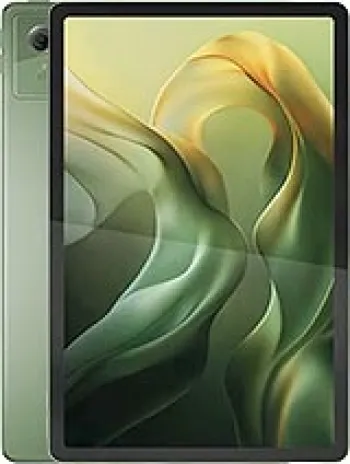
Introduction to Motorola A630
The Motorola A630, announced in the first quarter of 2004, stood out for its distinctive design and functionality during an era when mobile phones were mainly focused on basic communication tasks. This device was marked by its unique blend of a clamshell design and a full QWERTY keyboard, making it one of the early devices to blur the line between regular mobile phones and the emerging category of smartphones.
Design and Build
The design of the Motorola A630 was particularly innovative for its time. The phone measured 99 x 45 x 23 mm and weighed around 100 grams. Its compact form factor made it easy to carry, yet it was packed with numerous features. The phone's QWERTY keyboard was a standout feature, enabling quick and easy text entry, which was a landmark feature especially for handling emails and instant messaging services. The clamshell design protected the screen when closed, while flipping it open revealed the full keyboard.
Display
The Motorola A630 featured a TFT display capable of showing 65K colors with a resolution of 176 x 220 pixels. Although modest by today's standards, at the time, this was effective for displaying vibrant graphics, basic images, and navigational menus. The screen was crisp enough to handle the phone’s main tasks, such as messaging, basic web browsing, and viewing photos taken with its camera.
Camera Features
The phone was equipped with a VGA camera, with a resolution of 0.3MP. This allowed users to take simple photographs, although it lacked advanced features like autofocus or flash. The camera was mostly suitable for capturing spontaneous moments rather than any professional photography. Video capture, however, was not supported on this device, which was a significant limitation even for phones in that era.
Network and Connectivity
Equipped with GSM technology, the Motorola A630 supported 2G networks on GSM 900, 1800, and 1900 bands. It featured GPRS Class 10, allowing for basic internet connectivity, which was sufficient for the time for simple browsing and email activities. Bluetooth 1.1 was included, enabling wireless exchanges of files with other devices. However, it did not support WLAN or radio, and there were no advanced connectivity options like GPS or EDGE.
Memory and Storage
With an internal memory of 5MB and no card slot for expandable storage, the Motorola A630 had limited space for storing data. It could accommodate a phonebook with up to 1000 contacts, which was competitive for its time. The phone could store call records for the last 10 dialed, received, and missed calls. Although the memory seemed limited, it was generally aligned with the needs of typical users during that period.
Battery Life
The device was powered by a removable Li-Ion 850 mAh battery, identified by the model number SNN5683. This battery offered a standby time of up to 240 hours and a talk time of up to 4 hours. The removable nature of the battery provided users the option to carry a spare battery for extended use, which was a practical feature, especially during travel or long days away from charging facilities.
Messaging and Browsing
The Motorola A630 was adept at handling various messaging formats, offering SMS, EMS, MMS, Email, and Instant Messaging capabilities. It supported a WAP 2.0/xHTML browser, which enabled users to perform basic web browsing operations. While not suited for full internet browsing as seen on modern devices, it provided enough functionality for downloading ringtones, wallpapers, and some games.
Additional Features
The device supported downloadable Java games, enhancing its entertainment value. Despite having no advanced sensors or a 3.5mm audio jack, it did come with a loudspeaker and supported vibration alerts along with downloadable polyphonic and MP3 ringtones. Although lacking a wireless radio, users could personalize their device with various alert tones, enhancing the user experience.
Conclusion
The Motorola A630 was a pioneering device in its day, with features that showcased Motorola's innovative approach to meeting consumer needs for both communication and basic smartphone capabilities. Its combination of a clamshell design and a QWERTY keyboard brought a unique mix to the mobile phone market. Despite having limitations by today’s standards, such as the simple VGA camera and limited storage, it laid the groundwork for future devices that combined phone and PDA functionalities. The Motorola A630 remains a memorable example of early 2000s mobile design and ingenuity.
Key Features of Motorola A630
- GSM Technology - Supports GSM 900 / 1800 / 1900 bands
- QWERTY Keyboard for easy typing
- Compact and lightweight design - 99 x 45 x 23 mm dimensions and 100 g weight
- TFT Display with 65K colors and a resolution of 176 x 220 pixels
- Phonebook capacity of up to 1000 contacts
- Internal memory of 5MB
- VGA Main Camera
- Bluetooth 1.1 for wireless connectivity
- Support for SMS, EMS, MMS, Email, and Instant Messaging
- WAP 2.0/xHTML Browser
- Java support for downloadable games and applications
- Removable Li-Ion 850 mAh battery with up to 240 hours standby time
- Loudspeaker and support for MP3 ringtones
Motorola A630 Key Disadvantages
- No EDGE support for faster internet connectivity
- Discontinued, no longer available in the market
- Limited internal memory of only 5MB
- No expandable memory card slot
- VGA main camera with no video recording capability
- No selfie camera available
- Lacks a 3.5mm audio jack
- No WLAN for wireless internet connections
- Older Bluetooth version 1.1
- No GPS positioning feature
- Does not include an FM radio
- Limited battery talk time of up to 4 hours


View Also
More Phones
All Rights Reserved +14069 Phones © Mobilawy 2025

























